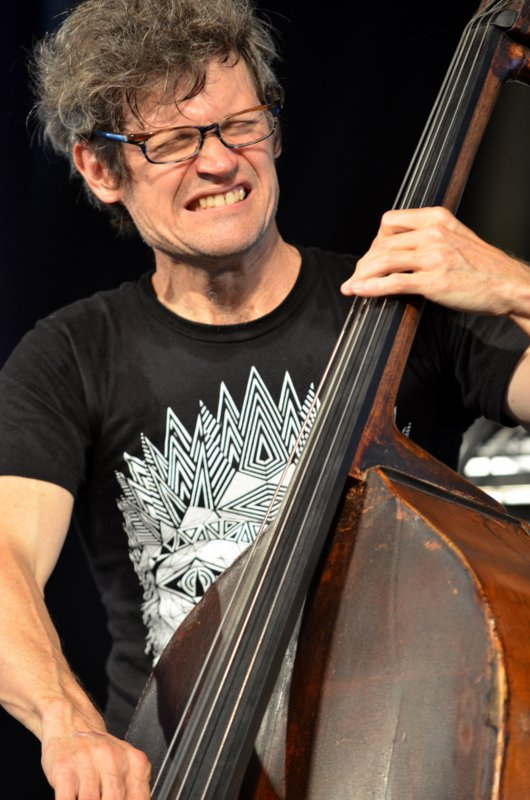Outside of the St. John Will-I-Am Coltrane African Orthodox Church, there aren’t many houses of worship to experience jazz in a spiritual way. But on Sunday, June 10, Café Istanbul could have made the case that it’s a sanctuary for New Orleans musicians, with bassist James Singleton as its prophet, and his Illuminasti Friends as his disciples.
With high, densely insulated ceilings and a sand-filled stage, the venue was the perfect space to accompany the group’s eclectic taste in sounds, which included distortion, looping effects, a melodica, and a tabla drum.
Singleton is one of the most creative bass players in the area, and there’s never any doubt that he’ll shine. Acoustic bass is not typically a lead instrument, but Singleton fronts the group well with his engaging presence on the stage. He maneuvered the bass as if he were an interpretive dancer, swaying side to side with his elbows cocked high in the air, brushing his hand across the belly of the instrument. It’s obvious through his playing that he hears something others don’t, and improvisation is how he conveyed his complex ideas to the audience.
Interaction was key to his performance, and the Illuminasti Friends had a natural connection to their nucleus. The group hardly played together as a quartet, and the main interaction was between Singleton and percussionist Mike Dillon. But while the form was free, there was still structure to the songs. They usually began with a pronounced head, where tenor saxophonist Tim Green and keyboard player Brian Coogan would be included, and then moved off to experiment. As with any standard, straight-ahead jazz tune, the head provided the song’s identity, but during the improvisational sections the musicians eased up, stretching each tune to its limits, exploring a myriad of possibilities.
Coogan was exceptional at leaving space within his chord voicings, and it gave Green a considerable amount of freedom in his own improvisations. But the energy of the band transmitted through Dillon, tattooed and playing with a rock sensibility.
The oddest part of the night was when Singleton began playing trumpet. Green joined in on harmony and Coogan blew chords through a melodica, as Dillon played a droning beat on the tabla. The pseudo-horn section followed suit and began droning along, creating a quiet and intense atmosphere among the audience.
It’s hard to describe what one can feel during these moments, but it’s possible to experience a deep interconnected-ness between the group and audience. The droning seemed suitable for calm meditation, and the performance began to feel like a religious experience. Coogan left the stage and went into the audience with his melodica and circled around, as if he were waiting for crowd members to stand up and follow him to receive a sound baptism. He returned to the stage, Singleton went back to his bass, and the group layered sounds on top of other sounds, stretching their improvisations as far as possible, perhaps in an attempt to reach some sort of enlightenment.





